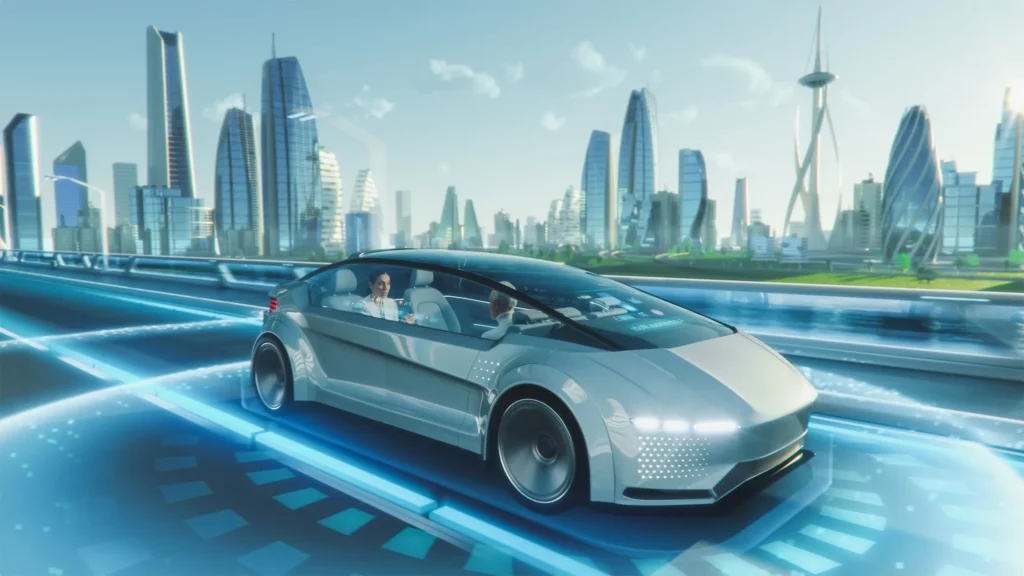Electric vehicles impact on roads is becoming an important topic as their popularity surges. While EVs offer clear environmental benefits, their increasing weight and the declining fuel tax revenue they produce are raising questions about the long-term health of road infrastructure. This article explores how electric vehicles, despite being environmentally friendly, may pose unique challenges for the roads we depend on every day.
The Rise of Electric Vehicles
Electric vehicles have become a central part of the global shift toward sustainable transportation. They promise to reduce carbon emissions, improve air quality, and lower dependence on fossil fuels. Governments worldwide are encouraging EV adoption through incentives, subsidies, and infrastructure improvements. Consumers are increasingly aware of the long-term savings and environmental advantages of switching to electric vehicles.
EVs operate differently from traditional vehicles. Instead of internal combustion engines, they rely on batteries to store and deliver electricity. These batteries allow EVs to produce zero tailpipe emissions, which is a major advantage for reducing urban air pollution. In addition, electric vehicles are quieter and require less maintenance due to fewer moving parts, making them appealing to both environmentally conscious and cost-conscious drivers.

Global adoption trends indicate a rapid increase in EV numbers on the road. Major automotive manufacturers are committing to electrifying their fleets, and consumers are choosing EVs as more charging stations and incentives become available. However, this growing number of electric vehicles comes with a less discussed side effect: their impact on roads and infrastructure.
The Weight Problem: EVs Are Heavier Than Traditional Cars
One of the main challenges with EVs is their weight. Batteries, which are essential for electric vehicles, are much heavier than a fuel tank and engine system in a traditional car. The added weight means that electric vehicles can be significantly heavier than their gasoline or diesel counterparts, often by several hundred kilograms.

This additional weight has direct consequences for roads. Heavier vehicles exert more pressure on road surfaces, causing faster wear and tear. Asphalt, concrete, and other common road materials are designed to handle typical passenger vehicle weights. When EVs add extra load, even if marginal, it accelerates pavement deterioration over time. This is especially true on roads that already see high traffic or have aging infrastructure.
While the difference may seem small on a single car, when multiplied across thousands or millions of electric vehicles, the cumulative effect can become significant. Roads are not just a surface; they are a complex system designed to withstand particular pressures. When these pressures increase, the likelihood of cracks, potholes, and other damage rises, leading to more frequent repairs and maintenance costs.
Comparing EVs to Heavy Trucks
It is important to put the weight of electric vehicles in context. Heavy trucks and freight vehicles have historically caused the most damage to road surfaces. A fully loaded truck can exert thousands of times the pressure of a standard passenger car, leading to deep ruts, cracks, and accelerated degradation of asphalt and concrete.
In comparison, electric vehicles are still far lighter than trucks. This means that while they contribute to road wear more than gasoline-powered cars, their overall impact is relatively modest when compared to commercial freight traffic. However, the challenge is not insignificant. As EV adoption grows, even small incremental effects on road wear could translate into substantial maintenance costs at a national level.

Funding Challenges: Roads and Declining Fuel Taxes
Another less obvious consequence of electric vehicles on roads is the decline in fuel tax revenue. Fuel taxes have long been a primary source of funding for road construction and maintenance. Every time a vehicle refuels, a portion of the cost contributes directly to the upkeep of roads.
With more people switching to electric vehicles, fuel consumption decreases. This means less revenue for governments to maintain road infrastructure. While EVs reduce carbon emissions and contribute to cleaner air, they also unintentionally reduce the funding available for the very roads they travel on.
To address this gap, some regions are exploring alternatives such as road usage charges, mileage-based fees, or annual EV taxes. These mechanisms aim to ensure that all vehicle owners contribute fairly to road maintenance, regardless of the type of vehicle they drive.
The Environmental Benefits of Electric Vehicles
While there are challenges related to roads, the environmental benefits of EVs are undeniable. Unlike traditional vehicles, EVs do not emit carbon dioxide or other harmful gases while driving. Reduced emissions lead to cleaner air, which improves public health, lowers respiratory diseases, and contributes to fighting climate change.
Electric vehicles also reduce noise pollution. Cities with high numbers of EVs benefit from quieter streets, which can improve the quality of urban life and reduce stress for residents. Additionally, as the electricity powering EVs increasingly comes from renewable sources, the environmental advantages continue to grow.
Balancing Road Maintenance and EV Adoption
The key challenge is balancing the benefits of electric vehicles with the practical realities of road maintenance. Policymakers, urban planners, and transport authorities must consider both the environmental advantages and the infrastructure challenges posed by EVs.
Potential strategies include:
- Innovative Road Materials: Developing road surfaces that are more resistant to wear from heavier vehicles. This could include new asphalt mixes or reinforced concrete designed for higher load-bearing capacity.
- Vehicle Weight Regulations: Encouraging automakers to develop lighter batteries and more weight-efficient vehicle designs without compromising range or safety.
- Usage-Based Road Funding: Implementing fair road usage charges for electric vehicles to compensate for lost fuel tax revenue. This could be based on mileage, weight, or vehicle type.
- Integrated Transportation Planning: Encouraging multimodal transportation, such as combining EV adoption with public transport investments, bike lanes, and pedestrian-friendly urban design. This reduces the number of vehicles on roads, minimizing wear and congestion.

Technological Advances and Future Solutions
The future of electric vehicles may help mitigate their impact on roads. Battery technology is rapidly evolving, with new materials and designs that reduce weight without sacrificing performance. Lighter EVs would naturally exert less pressure on road surfaces, minimizing additional wear.
At the same time, advances in road construction and materials science promise longer-lasting infrastructure capable of handling heavier and more diverse vehicle loads. Smart pavement technologies, improved asphalt formulations, and modular road designs may extend the lifespan of roads and reduce maintenance costs.
Furthermore, automated and connected vehicle technology could optimize traffic flow, reducing stop-and-go conditions that accelerate road damage. As cities become smarter, the combination of electric vehicles and intelligent infrastructure could lead to more sustainable and durable road systems.
Policy Considerations for Governments
Governments play a crucial role in ensuring that electric vehicles remain a net positive for society. Effective policies should encourage EV adoption while addressing the infrastructure challenges they pose. Some considerations include:
- Road Usage Fees: Implementing fair charges for EV drivers based on their contribution to road wear. This ensures roads remain funded and maintained.
- Incentives for Lighter EVs: Offering tax breaks or subsidies for vehicles that use lighter battery technology or innovative materials.
- Investment in Durable Roads: Allocating a portion of EV-related revenue to upgrading existing infrastructure to handle heavier vehicle loads.
- Urban Planning Strategies: Promoting electric public transport, walking, cycling, and shared mobility options to reduce overall road congestion and wear.
By taking a proactive approach, policymakers can ensure that electric vehicles continue to deliver environmental benefits without compromising road quality or safety.
Conclusion
Electric vehicles impact on roads is a complex but manageable challenge. While EVs provide clear environmental advantages by reducing emissions and improving air quality, their increased weight and declining fuel tax contributions create real infrastructure concerns.
The key is balance. Governments, manufacturers, and citizens can work together to implement solutions that maintain roads, optimize EV design, and continue to advance sustainable transportation. With thoughtful planning and investment, it is possible to enjoy the environmental benefits of electric vehicles while keeping our roads safe, durable, and functional for generations to come.
Do follow UAE Stories on Instagram
Read Next – Abu Dhabi Islamic Bank Posts Record Earnings And Asset Growth














